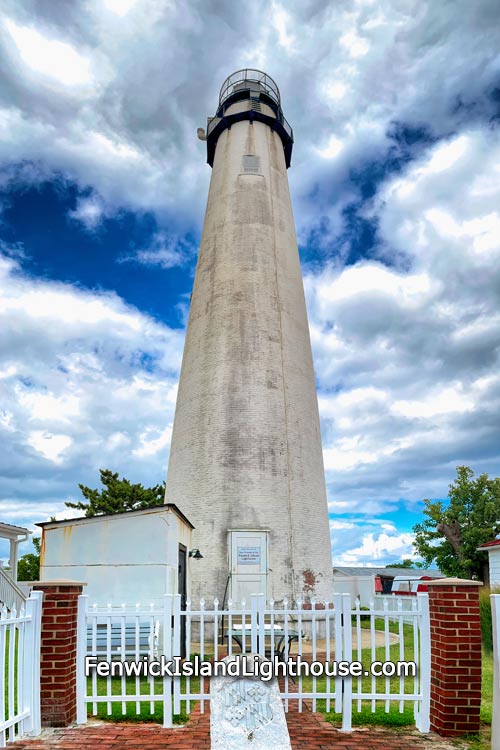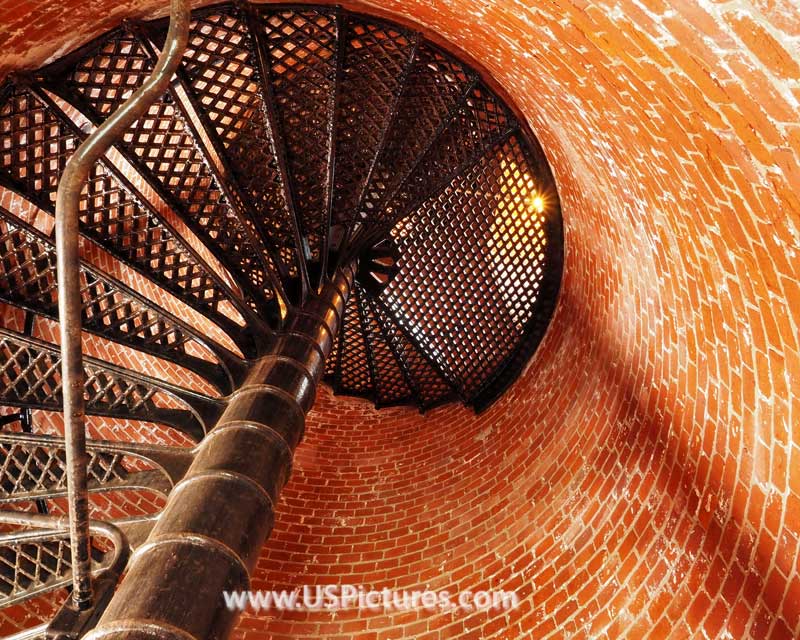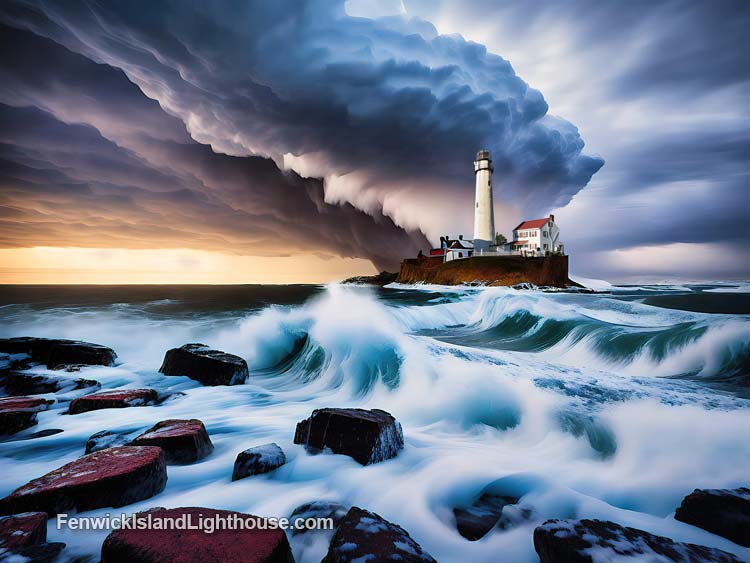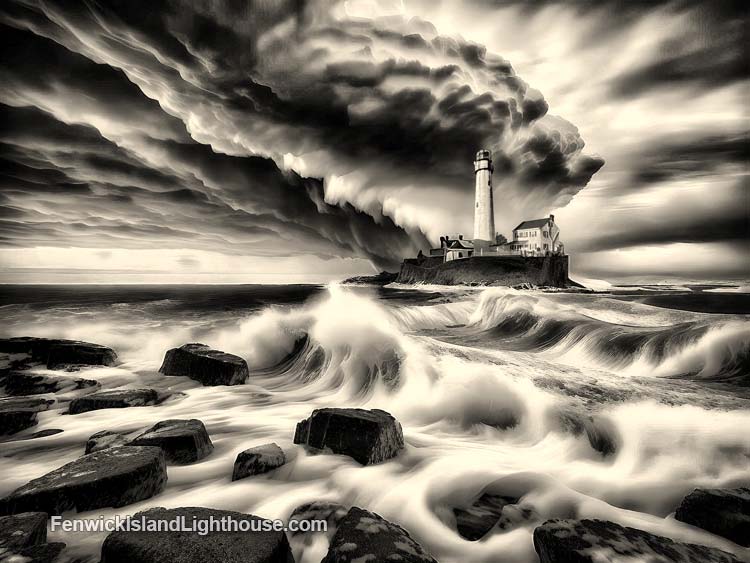There is a unique perspective when one looks directly up the lighthouse tower.
As I stood on the sandy shore, my gaze was drawn upwards towards the towering Fenwick Island Lighthouse. The sturdy structure stood tall against the backdrop of the endless ocean, its white facade gleaming in the sunlight. With each step closer, a feeling of awe and wonder grew within me.
Reaching the base of the lighthouse, I craned my neck to look up at its magnificent tower. The painted brick walls seemed to whisper stories of ships guided safely through treacherous waters by its steadfast beacon. The circular symmetry of course of bricks caught my eye; each layer revealing a unique aspect of its purposeful design.
With my imagination building inside me, I envisioned climbing higher until finally reaching the top: the lantern room. Stepping inside, I might be greeted by a breathtaking panoramic view that stretched as far as my eyes could see. Looking out at this vantage point, it was as though time had slowed down and all worries melted away into nothingness. Standing here atop history and beauty encapsulated in stone and the glass of the lantern room, made me feel connected to something greater than myself – a beacon calling out to lost souls in need. I only wish I could climb the tower. Maybe one day…
In that moment standing at the base, I realized that looking up at the Fenwick Island Lighthouse tower wasn’t just about witnessing an impressive feat of engineering or experiencing picturesque views; it was about finding solace and inspiration in its unwavering presence. This majestic structure was not only a guardian of maritime safety but also a symbol of hope and resilience that has stood against storms both literal and metaphorical throughout the decades.



